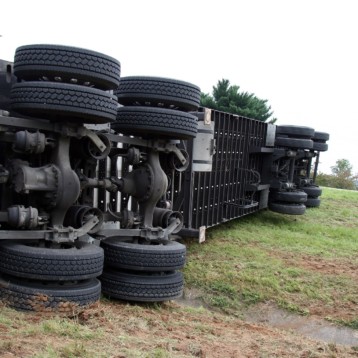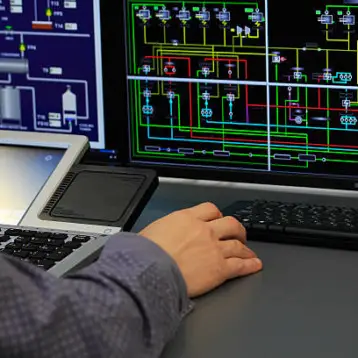Airplanes’ landing procedure is common knowledge. First, the plane maneuvers slowly into an approach pattern; then, there is the long descent, and finally, the wheels touch the ground and the pilot applies the brakes until the plane comes to a full stop. In comparison, birds switch from barreling forward at full speed to lightly touching down on a target as narrow as a telephone wire. Now, a team of scientists tried to understand this difference in order to improve landing technique for airplanes.
According to this recent study, birds’ ability to land precisely depends on a complicated physical phenomenon called “stall.” In fluid dynamics, a stall is a reduction in the lift coefficient generated by an airfoil as angle of attack increases. This occurs when the critical angle of attack of the airfoil is exceeded; typically, about 15 degrees, but it may vary.
When a commercial airplane is changing altitude or banking, its wings are never more than a few degrees away from level. Within that narrow range of angles, the airflow over the plane’s wings is smooth and regular, like the flow of water around a small, smooth stone in a creek bed. However, when a bird approaches its perch it will tilt its wings back at a much sharper angle; it makes the airflow over the wings turbulent, and it creates large vortices — whirlwinds — from behind the wings. The effects of the vortices are hard to predict; for instance, if a plane tilts its wings back too far, it can stall and fall out of the sky (hence its name).
The newly designed control system is based on mathematics, and developed by MIT associate professor Russ Tedrake, a member of the Computer Science and Artificial Intelligence Laboratory, and Rick Cory, a PhD student in Tedrake’s. Their challenge was to describe the stall phenomenon mathematically; although most engineers understand it, modeling it is time-consuming, in terms of computation.
The developed model enabled Professor Tedrake and Cory to guide a foam glider to its perch, but executing a fluid landing was not that simple “It gets this nominal trajectory,” Cory explains. “It says, ‘If this is a perfect model, this is how it should fly.’ But, because the model is not perfect, if you play out that same solution, it completely misses.”
The imperfections of the initial model drove Cory and Tedrake to develop a set of error-correction controls that could nudge the glider back onto its trajectory when location sensors determined that it had deviated from it. By using innovative techniques developed at MIT’s Laboratory for Information and Decision Systems, they were able to calculate precisely the degree of deviation that the controls could compensate for.
The control system ends up being a bunch of tubes pressed together like a fistful of straws. The addition of the error-correction controls make the trajectory look like a tube snaking through space; the center of the tube is the trajectory calculated using Cory and Tedrake’s model, and the radius of the tube describes the tolerance of the error-correction controls. Once the glider launches, it just keeps checking its position and executing the command that corresponds to the tube in which it finds itself. The ultimate solution found allows the glider to constantly be in one of the possible courses; if it goes so far off course that it leaves one tube, it will still find itself in another.
A cruising plane tries to minimize its drag coefficient—the measure of air resistance against a body in flight. Usually, when an aircraft is trying to slow down, it tilts its wings back in order to increase drag. Ordinarily, they cannot tilt back too far, for fear of stall. However, because Cory and Tedrake’s control system takes advantage of stall, the glider has a drag coefficient that is four to five times that of other aerial vehicles
There are several potential applications for the new system. For one, the U.S. Air Force has been interested in the possibility of unmanned aerial vehicles (UAVs) that could land in confined spaces; therefore, it has been funding and monitoring Tedrake and Cory’s research. “What Russ and Rick and their team is doing is unique; I don’t think anyone else is addressing the flight control problem in nearly as much detail,” says Gregory Reich of the Air Force Research Laboratory. More accolades come from Boeing, who gave Cory the 2010 Engineering Student of the Year Award for the system’s development.
Still, current design interferes with the military’s plans: In the conducted experiments Cory and Tedrake used data from wall-mounted cameras to gauge the glider’s position, and the control algorithms ran on a computer on the ground that transmitted instructions to the glider. “The computational power that you may have on board a vehicle of this size is really, really limited,” Reich says.
Despite the drawbacks mentioned Tedrake is optimistic, saying that in a few years’ time computer processors will be powerful enough to handle the control algorithms. In the meantime, his lab has already begun to address the problem of moving the glider’s location sensors onboard. On a humorous note, Cory concludes: “I visited the Air Force, and I visited Disney, and they actually have a lot in common: the Air Force wants an airplane that can land on a power line, and Disney wants a flying Tinker Bell that can land on a lantern.”
TFOT has also covered CyberQuad, a UAV capable of vertical take-off and landing, and Deep Throttling, a technology developed by NASA to make smoother landings.
For more information about the technology that allows planes to land like birds, see MIT’s press release.











